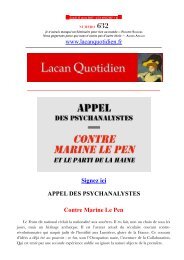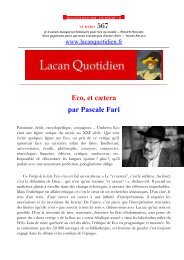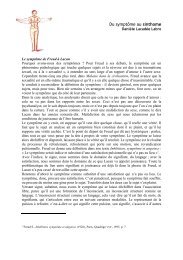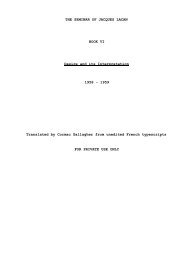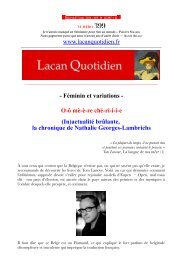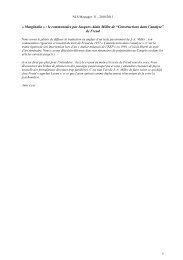Brazilian-Beef-Final_Optimized1
Brazilian-Beef-Final_Optimized1
Brazilian-Beef-Final_Optimized1
Create successful ePaper yourself
Turn your PDF publications into a flip-book with our unique Google optimized e-Paper software.
DEFORESTATION AND THE BRAZILIAN BEEF VALUE CHAIN<br />
4<br />
The Intersection of <strong>Beef</strong> and Palm Oil<br />
To meet anticipated demand of 10.5 million additional hectares of farmland, the <strong>Brazilian</strong><br />
government realizes it must encourage planting on already-degraded lands. <strong>Beef</strong> ranchers have<br />
millions of hectares of underutilized ranchland that could be devoted to palm oil and other<br />
high-demand commodities. Accordingly, several public and private sector programs now encourage<br />
ranchers to also plant crops—efforts that, if managed well, can help avoid further land clearing.<br />
Still, a positive outcome will not be automatic. To ensure that palm oil is an environmental win for<br />
the Amazon and an economic one for ranchers and farmers, it is necessary to ensure that only<br />
already-degraded land is used. It is also necessary to make certain that small producers capture<br />
economic value, to avoid the pitfalls of mono-cropping, and to step up the role of the public sector.<br />
Planting on degraded ranch land<br />
Although Brazil currently accounts for just 0.5% of global palm oil production, the government<br />
anticipates, and is actively encouraging, substantial growth (UNEP, 2011). In 2010, EMBRAPA<br />
identified 32 million hectares of land suitable for palm oil cultivation, 29 million of which are<br />
located in the Amazon biome (EMBRAPA, 2010). The <strong>Brazilian</strong> government considers palm oil a<br />
win-win opportunity, frequently citing the crop’s potential returns as green fuel, green jobs, and a<br />
carbon sink ideal for reforesting lost segments of the Amazon (Frayssinet, 2013; SAGRI, 2013;<br />
UNEP, 2011). Of course, the key to realizing these green benefits is preventing further clearing of<br />
forest land. Fortunately, several private and public sector incentive programs are in place, each<br />
prohibiting any expansion of new crops on forested land.<br />
A description of programs that incentivize the integration of palm oil and other crops with<br />
ranchland is found in Table 5. One of the largest public initiatives is the Low Carbon Agriculture<br />
(ABC) program. ABC actively supports the integration of cattle and other agricultural activities,<br />
providing low-interest financing (EMBRAPA, 2011). The program aims to convert 15 million<br />
hectares of degraded ranchland to crops as a means to improve agricultural productivity without<br />
expanding into new areas (Marques, 2013).<br />
To promote the expansion of palm oil, the government has implemented two complementary social<br />
inclusion programs: the Social Fuel Seal (SFS) and the Program for Strengthening Family<br />
Agriculture (Pronaf EcoDendê). The SFS is a certification private biofuel companies must earn in<br />
order to participate in the majority of biodiesel auctions, and it requires a certain minimum<br />
percentage of raw materials to be sourced from small producers (Cesar et al., 2013; Glass, 2013a;<br />
Secretaria da Agricultura Familiar, 2013). Pronaf EcoDendê—a subprogram recently developed<br />
under the broader Pronaf program—provides 2% financing to small family farmers to expand palm<br />
oil production (Glass, 2013b; MDA, 2012). Palm oil has become a priority for Pronaf. In the<br />
2013/2014 budget, Pronaf allocated nearly R$ 125 million for palm oil projects in its EcoDendê<br />
31<br />
DATURESEARCH.COM



